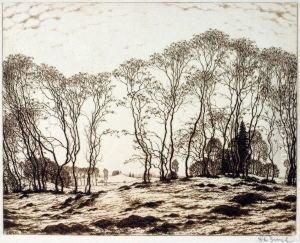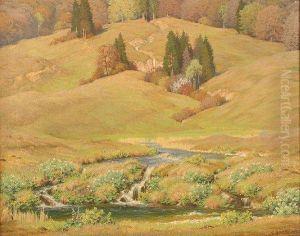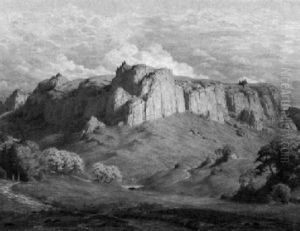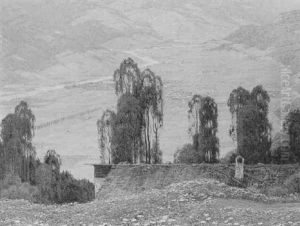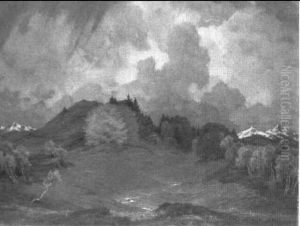Georg Broel Paintings
Georg Broel was a German painter and graphic artist known for his contributions to expressionism and his exploration of industrial landscapes and labor themes. Born on October 12, 1895, in Glogau, Silesia (now Głogów, Poland), Broel's early life was marked by the cultural and industrial transformation of Germany at the turn of the 20th century, influences that would later permeate his artistic work. He studied at the Royal School of Art in Breslau (Wrocław) and further honed his skills at the Academy of Fine Arts in Munich, where he was exposed to the burgeoning expressionist movement, a style that would significantly shape his artistic output.
Broel's work is characterized by bold, dynamic strokes and a somber palette, often depicting the harsh realities of industrial workers and the urban landscape. His subjects ranged from coal miners and steel workers to the factories and machinery that symbolized the modern age. Through his art, Broel sought to capture the essence of human struggle and resilience amidst the mechanization and alienation of early 20th-century life. His approach not only aligned with the expressionist movement's emphasis on emotional expression and the distortion of forms for emotional effect but also highlighted his deep empathy for the working class.
Despite his promising career, Georg Broel's life was cut short by the onset of World War II. He died in 1940, under circumstances that reflect the tumultuous period he lived in. Though not as widely recognized as some of his contemporaries, Broel's contributions to German expressionism and his poignant representations of industrial life provide a unique window into the era's socio-economic and cultural shifts. His work remains a testament to the power of art to reflect and critique the human condition and the industrial landscape that shaped the early 20th century.
